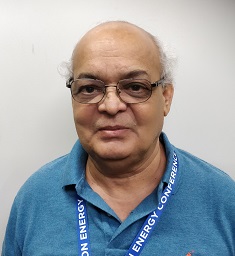Colloquium # 292
Generation of the Micro-scale and Meso-scale Structures at the Marginally BM Stable Pedestal: A Scenario for ELM Crash and I-mode
By Prof. Raghvendra Singh
National Fusion Research Institute (NFRI),
Daejeon, Republic of Korea
Tuesday, Oct 30th 2018 at 3:30 PM
Seminar Hall

Abstract
H-mode: Recent MHD simulations have demonstrated that one of the important ingredients giving rise to the ELM crash is the hyper-resistivity in the Ohms law. In this talk, I will discuss the three key issues responsible for ELM crash, which are: 1) the source for the hyper dissipations (e.g. hyper resistivity and hyper viscosity); 2) high-k ballooning mode (BM) driven by hyper-dissipation near marginally stable BM boundary; 3) the possible nonlinear saturation mechanism of the high- k BM. The possibility of long scale zonal fields [e.g. mesoscale poloidal magnetic fields (zonal current) and radial magnetic fields (streamers)] are examined. Their potential impact on thermal transport and to an ELM crash will be discussed.
I-mode: The dissipative electromagnetic electron drift mode (DEEM) turbulence is examined and identified the potential source for GAM and weak ZF excitation in stationary I-mode pedestal. The modulation instabilities of long-scale ZF and GAM in the background of DEEM turbulence are presented. With weak ZF, the turbulent transport due to DEEM may keep pedestal profile below the ballooning instability boundary - this may be viewed as a stationary I-mode. At the same time, the nonlinear advection of pressure fluctuations can generate GAM, a stationary feature of I-mode. The scaling of stationary I-mode pedestal width based on stability of zonal flow is derived.
About the speaker
He did his Ph.D. from IIT Roorkee in 1981 then worked in IIT Delhi as Sr. Scientific Officer. In 1985, went to TEXTOR as Post-Doctoral Fellow and worked there till 1988. He persuaded his Post-Doctoral work further in Chalmers University till 1989.
Joined Institute for plasma research, Gandhinagar in 1989 and retired as Senior Professor in 2014. From 2012, till date, he is working as Senior Researcher in NFRI, Korea. His field of specialization is Turbulent Transport in Fusion Devices.

